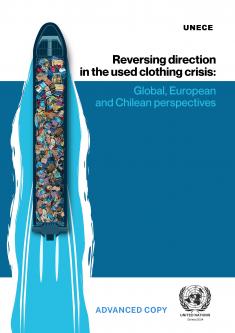The textile industry has evolved from a production model based on natural fibres and protectionist policies for local industry to a model where synthetic fibres have become pervasive, production has been offshored, and the speed of manufacture and distribution of products has increased rapidly. Most of the fashion industry operates under the fast-fashion model, which involves more collections per year, generally at low prices, used for less and less time. This has led to a growing rate of overproduction and overconsumption of clothes.
These excesses have boosted the development of an important market for second-hand clothes, with international trade worth USD 9.3 billion in 2021. These garments largely flow from higher- to lower-income countries. The main exporters (by value) are the EU, China, the United States, and the United Kingdom, and the principal importers are Pakistan, Ukraine, Kenya, and Chile.
